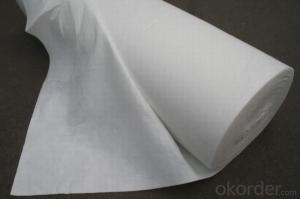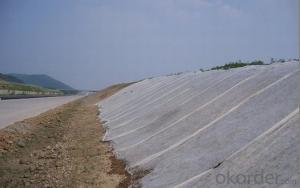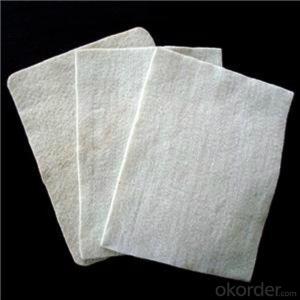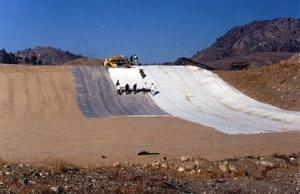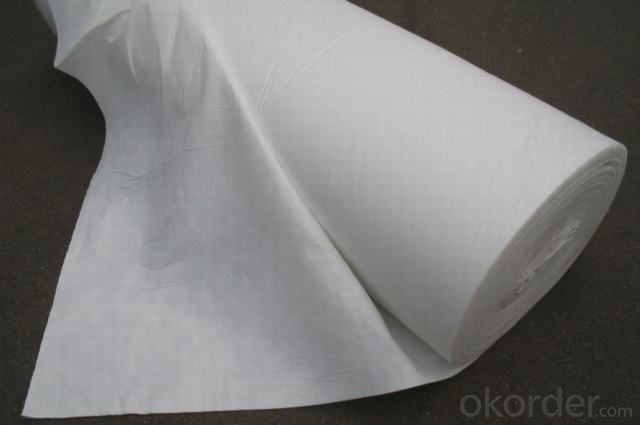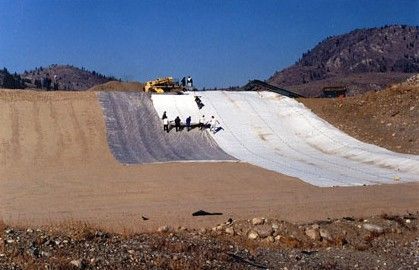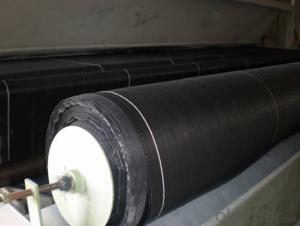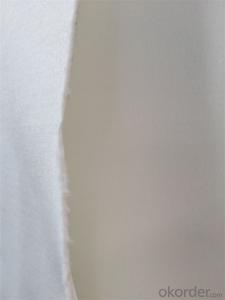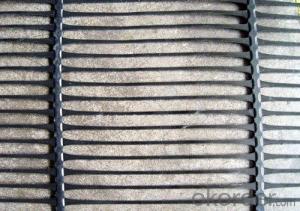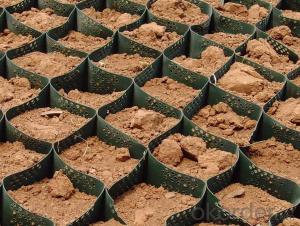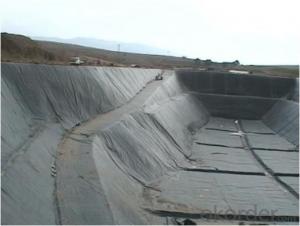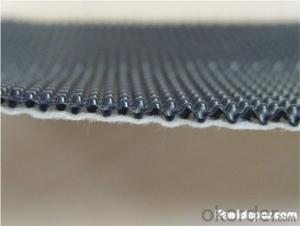Geotextile Gazon for Construction - Geosynthetics
- Loading Port:
- Qingdao
- Payment Terms:
- TT or LC
- Min Order Qty:
- 20000 m²
- Supply Capability:
- 1500000 m²/month
OKorder Service Pledge
OKorder Financial Service
You Might Also Like
1.Advantage and function of Geotextile as one type of Geosynthetics
Good flexibility,permeability,filtration,separation and easy for construction
1) Filtration
The filtration layer of the dykes, river canal, seacoast, concrete slope, retaining walls. At the same time of preventing the clay granule from passing, it allows the water and the gas pass through freely.
2 )Separation:
The isolation of the railway dregs and the roadbed, roadbed and the soft base, surface of the airdrome and parking lot and the groundsill, different dam materials. It isolates the soil and the gravel of two kinds different granule pathway from the groundsill or other buildings.
3) Adding muscle:
The highway, railway, soil-stone dam, breakwater, airport, backfill soil of retaining wall, slope protection, etc in which distributes the earth stress, prevents the side-displacement of the earth body and improves the earth body stability.
4 )Protection
It prevents the dam from being washed out, protects the dam and the bottom, prevents the water and soil from being washed away.
2.Usage:
Used in the area of highway,railway,dam,reclamation etc.for filtration separation drainage and protection.
3.Size of package
Width is 1-8m,length is 50-100m,or pack as client request
2.Specifications of Geotextile as one type of Geosynthetics
1) Weight / Mass: 100g/m2-1500g/m2
2) Width: Within 8 m (1m-8m)
3) Length: 50m-100m/roll (as request)
4) Material: PP / PET
5) Color: Black , white , grey and other color
6) Certificate: CE/ISO9001 , ISO14001
7) Manufacturing method: nonwoven / woven
8) The Biggest geotextile manufacturer/factory in China for many years
3. Technical Data Sheet of Geotextile as one type of Geosynthetics
PET continuous filament spunbond needle punched nonwoven geotextile(representative average data.) | |||||||||
Test Item/Unit/No. | HY100 | HY150 | HY200 | HY250 | HY300 | Test Method | |||
Mechanical Properties | |||||||||
Tensile Strength | CD | kn/m | 4.8 | 8.3 | 10.9 | 14.5 | 18 | ASTM D 4595 | |
MD | 7 | 12 | 14 | 18 | 22 | ||||
Elongation at maximum load | CD | % | 65 | 64 | 63 | 62 | 61 | ||
MD | 64 | 63 | 62 | 61 | 60 | ||||
Grab Strength | CD | kn ≥ | 0.36 | 0.58 | 0.87 | 1.08 | 1.35 | ASTM D 4632 | |
MD | 0.42 | 0.78 | 1.07 | 1.33 | 1.6 | ||||
Grab Elongation | CD | % | 55 | 55 | 59 | 59 | 60 | ||
MD | 50 | 50 | 51 | 51 | 53 | ||||
Trapezoidal Tear | CD | kn ≥ | 0.16 | 0.23 | 0.31 | 0.39 | 0.46 | ASTM D 4533 | |
MD | 0.245 | 0.31 | 0.42 | 0.46 | 0.55 | ||||
Burst Strength-CBR plunger method | kn ≥ | 0.85 | 1.47 | 2.3 | 2.8 | 3.3 | ASTM D 6241 | ||
Puncture resistance | n ≥ | 220 | 320 | 430 | 540 | 650 | ASTM D 4833 | ||
Mullen Burst | Mpa | 1.2 | 1.8 | 2.3 | 2.8 | 3.3 | ASTM D 3786 | ||
Cone drop resistance(hole-Φ)Dynamic perforation diameter | mm | 34 | 30 | 26 | 22 | 19 | BS EN 918-1996 | ||
Hydraulic Properties | |||||||||
Flow Rate,Q100 | L/s/m² | 200 | 210 | 180 | 150 | 140 | ASTM D 4491 | ||
Permeability | cm/s | 0.48 | 0.43 | 0.39 | 0.36 | 0.34 | |||
Apparent Opening Size O95 | mm ≤ | 0.13 | 0.12 | 0.12 | 0.11 | 0.11 | ASTM D 4751 | ||
Apparent Opening Size O90 | mm ≤ | 0.12 | 0.11 | 0.11 | 0.1 | 0.1 | |||
Physical Identification Properties | |||||||||
Thickness 2KPa | mm | 1.1 | 1.3 | 1.8 | 2.5 | 2.9 | ASTM D 5199 | ||
Mass per unit area | g/m² | 100 | 150 | 200 | 250 | 300 | ASTM D 5261 | ||
Width | m | 2/3/6/ | 2/3/6/ | 2/3/6/ | 2/3/6/ | 2/3/6/ | |||
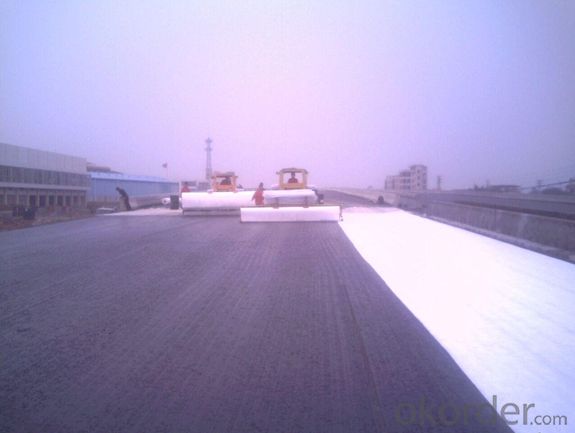
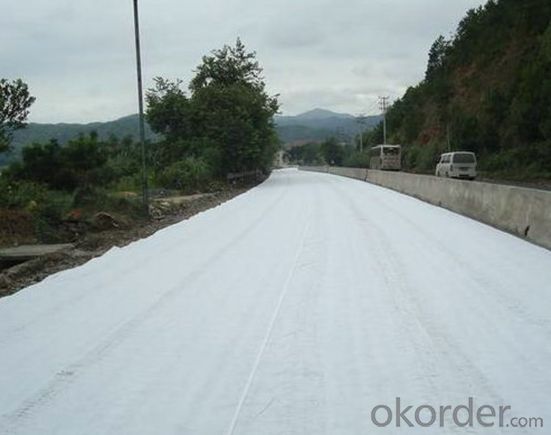
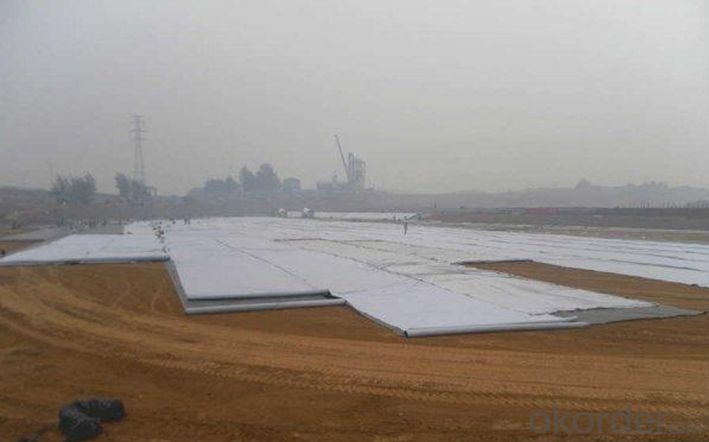
Pond Liner and Geomembrane Lining Systems - Once known as "flexible membrane liners", geomembranes encompass a broad group of products with distinctive properties and advantages in a multitude of uses as liners for pond lining, landfills, waste water ponds, floating covers, tanks, leach pads, reservoirs, lagoons, barriers, caps, secondary containment - application use is bounded only by the imagination.
What are Geomembranes and Geosynthetics? - Geosynthetics is a general classification representing all man-made materials used in geotechnical engineering applications including pond liners and lake lining. Many of its products are engineered to meet specific design requirements in fluid barrier systems or are designed to enhance the properties of existing soils (physical, hydraulic or mechanical).
Geosynthetics are a Smart Alternative - The value of these products lies in their ability to partially or completely replace [non-renewing] natural resources such as gravel, sand, bentonite clay and do so at a much lower cost. The technical advantages of geosynthetics are the engineered, testable, quality monitored properties of geosynthetic products versus the often difficult to verify quality and specs of naturally occurring materials. Different geosynthetic materials can be combined in order to perform desired functions, often yielding higher "rates" than the components taken separately.
- Q: Can geotextiles be used in geosynthetic clay liner applications?
- Yes, geotextiles can be used in geosynthetic clay liner applications. Geotextiles are often used as a protective layer or separator over the geosynthetic clay liner to prevent clogging and enhance the overall performance of the liner system.
- Q: Can geotextiles be used in erosion control on riverbanks?
- Yes, geotextiles can be used in erosion control on riverbanks. Geotextiles are often used as a stabilization measure to prevent soil erosion by providing a barrier against water flow and supporting vegetation growth. They help to retain soil while allowing water to pass through, reducing the impact of flowing water on riverbanks and preventing further erosion.
- Q: What are the factors to consider when selecting geotextiles for coastal protection projects?
- When selecting geotextiles for coastal protection projects, there are several factors to consider. Firstly, the type and quality of the geotextile material is crucial. It should be durable, resistant to UV radiation, and capable of withstanding the harsh coastal environment, including exposure to saltwater and strong waves. Secondly, the intended function of the geotextile should be taken into account. Different geotextiles offer varying levels of erosion control, filtration, and stabilization. Therefore, the specific needs of the coastal protection project, such as preventing beach erosion or stabilizing coastal structures, should be considered. Thirdly, the site conditions and project requirements play a significant role. Factors like wave energy, sediment characteristics, and slope stability need to be assessed to determine the appropriate geotextile specifications. Furthermore, the installation and maintenance requirements should be evaluated. Geotextiles that are easy to install and require minimal maintenance are often preferred, as they can save time and costs during the project's lifespan. Lastly, the cost-effectiveness and longevity of the geotextile should be taken into consideration. It is essential to balance the initial cost of the geotextile with its expected lifespan and performance to ensure a sustainable and economical solution for coastal protection.
- Q: How are geotextiles used in shoreline protection?
- Geotextiles are used in shoreline protection to prevent erosion by stabilizing the soil and reducing wave energy. They are placed along the shoreline to act as a barrier, preventing sediment from being washed away and providing a stable foundation for vegetation to grow. Additionally, geotextiles can be used to filter water and trap sediment, improving water quality and protecting the shoreline from further degradation.
- Q: Can geotexters cover grass seeds?
- To be very thin very Caixing, the cost a little expensive Oh waste
- Q: Geotextile is what to do with
- Geotextile is reinforced and segregated, reinforced mainly to enhance the ability of materials to shear and tensile deformation, to prevent the reflection of cracks in the road; isolation is the separation of different materials to maintain their performance; because the geotextile itself is not waterproof, In the old road renovation over the asphalt mixture will form impermeable complex, in addition to preventing cracks will have a certain waterproof effect. The roadbed refers to the strip structure that is built on the basis of the route position and certain technical requirements. It is the basis of the railway and the road. The roadbed is a linear structure made of soil or stone. Built in good geological, hydrological, climatic conditions under the roadbed. From the material points, subgrade can be divided into soil subgrade, stone roadbed, earth and rock roadbed three.
- Q: What is the difference between woven and non-woven geotextiles?
- Woven geotextiles are made by interlacing yarns or fibers together, creating a strong and durable fabric. They have a high tensile strength and are commonly used for applications that require high load-bearing capacity, such as stabilizing soil or preventing erosion. Non-woven geotextiles, on the other hand, are made by bonding fibers together using heat, chemicals, or mechanical processes. They are generally less strong and more flexible than woven geotextiles. Non-woven geotextiles are often used for filtration, separation, or drainage purposes, where their permeability and ability to retain fine particles are important factors.
- Q: What are the specifications for geotextiles in drainage projects?
- The specifications for geotextiles in drainage projects typically include factors such as the material type, weight, permeability, tensile strength, and filtration properties. The geotextile material should be appropriate for the specific drainage application and capable of withstanding the anticipated loads and environmental conditions. It should also have a specific weight or thickness to ensure proper performance. The permeability of the geotextile is important to allow water to flow through while preventing soil particles from clogging the drainage system. Tensile strength is a crucial factor as it determines the geotextile's ability to withstand installation stresses and potential loads. Lastly, filtration properties are essential to retain soil particles while allowing water to pass through.
- Q: Are geotextiles suitable for use in mining tailings containment?
- Yes, geotextiles are suitable for use in mining tailings containment. Geotextiles offer excellent filtration properties, high tensile strength, and durability, making them effective in preventing soil erosion and controlling water flow within tailings containment areas. They can also aid in the separation of different layers of tailings, improving the stability and overall performance of the containment system.
- Q: Can geotextiles be used in retaining wall construction?
- Yes, geotextiles can be used in retaining wall construction. They are often used as a reinforcement material to improve the stability and longevity of the wall. Geotextiles can help in preventing soil erosion, providing drainage, and increasing the overall strength of the retaining wall.
Send your message to us
Geotextile Gazon for Construction - Geosynthetics
- Loading Port:
- Qingdao
- Payment Terms:
- TT or LC
- Min Order Qty:
- 20000 m²
- Supply Capability:
- 1500000 m²/month
OKorder Service Pledge
OKorder Financial Service
Similar products
Hot products
Hot Searches
Related keywords
